Tobacco Lobbyists Attempt to School Pope Francis On Climate Change


The influential U.S. organization Heartland Institute, better known for its longtime advocacy on behalf of the tobacco industry, has announced that it is sending "real scientists" to advise Pope Francis on climate change. If you were impressed -- and surprised -- that this notoriously misinformative lobbying group got face-time with the Holy Father, guess again. Heartland's latest press release is headed, "Heartland Institute Heads to Rome to Advise Pope Francis on Climate Policy," but read down a few lines and you'll see all these "real scientists" will be staged at a public event "just outside" the Vatican.
That little dance around the truth neatly sums up Heartland's winning strategy on both tobacco and climate issues, so let's take a closer look at some of those "real scientists."
Real scientists to advise Pope Francis on climate change -- not
Since Heartland is so jazzed about its real scientists, we followed the links to its "Vatican Environment Workshop" to see if we could spot any familiar faces.
We stalled out there, but a couple of seconds on Google brought us to Climatedepot.com, where site publisher Marc Morano was happy to inform us that he will be part of a "high level skeptical delegation with the Heartland Institute, traveling to Rome to offer alternative voices to the Vatican and Pope Francis on global warming."
To be honest, we're assuming that Morano is not one of the real scientists, mainly because he has no professional credentials in any scientific field. According to our friends over at Sourcewatch, Morano has a background as a reporter specializing in climate change denial, later going on to work for Oklahoma Sen. James Inhofe, a noted supporter of fossil fuel interests.
So, moving on to the real scientists that Morano lists, there's Hal Doiron, a retired NASA scientist who has no background in climate research, though he did some important work on the Space Shuttle design.
It took us a while to track down "Physicist Dr. Tom Sheahan." We can't be 100 percent certain, but that could be the same Thomas P. Sheahan who joined 99 other people back in 2008 to sign an open letter to President Barack Obama asserting that "the case for alarm regarding climate change is grossly overstated."
The letter was published in newspaper advertisements paid for by the Cato Institute. We bring that up not only because the organization is heavily funded by the Koch brothers, but also because of Cato's long time connection to tobacco advocacy.
Helpfully, Morano's link for Sheahan brought us back around to Heartland's website, where under a slightly different spelling (Sheahen), he is listed as a "professional physicist and energy expert." There you'll find an impressive array of affiliations, including a fairly recent stint as an analyst with the National Renewable Energy Laboratory's Systems Integration Office. Take a look at the Heartland bio and see if you can spot any experience in climate science -- we couldn't.
Of the other real scientists cited by Morano, Christopher Monckton (aka Lord Monckton) is probably the most familiar on the climate denial circuit, partly through his affiliation with a group called Friends of Science.
Predictably, Monckton's science credentials are somewhat lacking, particularly in the field of climatology.
Taking climate change seriously
We could go on, but this short list of names underscores Heartland's basic strategy. Rather than addressing climate science on its own turf, Heartland goes about lumping various scientific fields together with journalism and politics, and churning them out under the label "real scientists."
The overall effect is to reduce climate science to a footnote, as if it is not a serious discipline at all -- after all, anyone who has anything to say about climate change is a "real scientist," regardless of whether or not they know what they're talking about.
Once you've leveled the playing field down to the lowest level of professional qualifications, anything goes.
Photo credit: Vatican Stairs by Vicente Villamón via flickr.com, creative commons license.
Woman Transforms Thrift Shop Fashion Dolls Into 'Real' Girls


She is not the first to perform make-unders on discarded dolls -- fashion dolls in particular. People have been doing it for years. But ever since Sonia Singh from Hobart in Tasmania, Australia, started sharing the results of her work via social media just a few months ago, she quickly rose to become the fairy godmother of a new ideal: Transforming dolls into the real deal for girls to play and identify with.
By now, Sonia trademarked her creations, Tree Change Dolls, auctions off a doll each month for a good cause, and successfully runs an Etsy shop of dolls, prints and greeting cards. Her doll collections are often sold out within hours after being showcased. She's made more than 1,000 sales since February of products including prints and knitting patterns. What is the key to her success?
The answer can be found in random comments on Sonia's Facebook page that has almost 400,000 enthusiastic followers, a number growing every day. The fans, mostly women, are moved by what is described as "capturing the true spirit of childhood" in each individual doll. It's the natural looks, the hand-knitted clothing and underlying message that appeals to people all over the world. Sonia supports the idea of giving old and broken dolls new life instead of letting them end up as plastic waste in landfills, adding to the pollution of our planet. By upcycling second-hand fashion dolls into toys that are closer to the everyday reality of life and nature, she hopes to establish a better connection to how children perceive themselves and their friends, because the dolls resemble real children.
Sonia gets her dolls from tip shops and second-hand markets. She removes the often excessive make-up with acetone and paints new, more natural looking faces. Some of the dolls even have gaps in between their teeth, tiny imperfections which are highly appreciated by parents who have children with similar dental features. It makes them feel acknowledged and real. When feet, hands, shoes or other body parts are missing, Sonia repairs those as well. The knitted clothes are designed and made by Sonia's mother. The knitting patterns can be downloaded from the Tree Change Dolls website, where people can also find links to do-it-yourself video tutorials about how to clean up and repaint the dolls.
Sonia emphasized more than once that she doesn't see herself as a doll manufacturer, and she can only create a certain amount of dolls in a given period of time. Her encouragement for others to DIY has proven fruitful and is creating a community and movement she never could have anticipated when she looked for a new hobby after losing her job as a science communicator.
Bright Hill Upcycled Dolls, Noodle and Roo, Playful Child Dolls, and Earth Wood Beauty Dolls are just a few of the other artists out there who are giving used and unwanted fashion dolls a second chance, inspired by Sonia Singh.
While Sonia and her family are rapidly building what they want to remain a small business, the awareness of restyling old dolls and reducing landfill waste is spreading in a happy, infectious buzz. Some just enjoy looking at pictures of the refurbished dolls before and after, others really want their kids or grandkids to play with them.
And even if Sonia's dolls might sell as highly collectible items, at prices ranging from 65 to 250 Australian dollars, they are made with the intent for children to play with, to reconnect to values closer to our true selves. It's indeed the spirit of childhood symbolized in a hobby-gone-viral, with thousands of fans embracing perhaps their own inner child.
Image credits: Sonia Singh - Tree Change Dolls
Is Mass Balance Pushing Your Chocolate Bar Too Far?
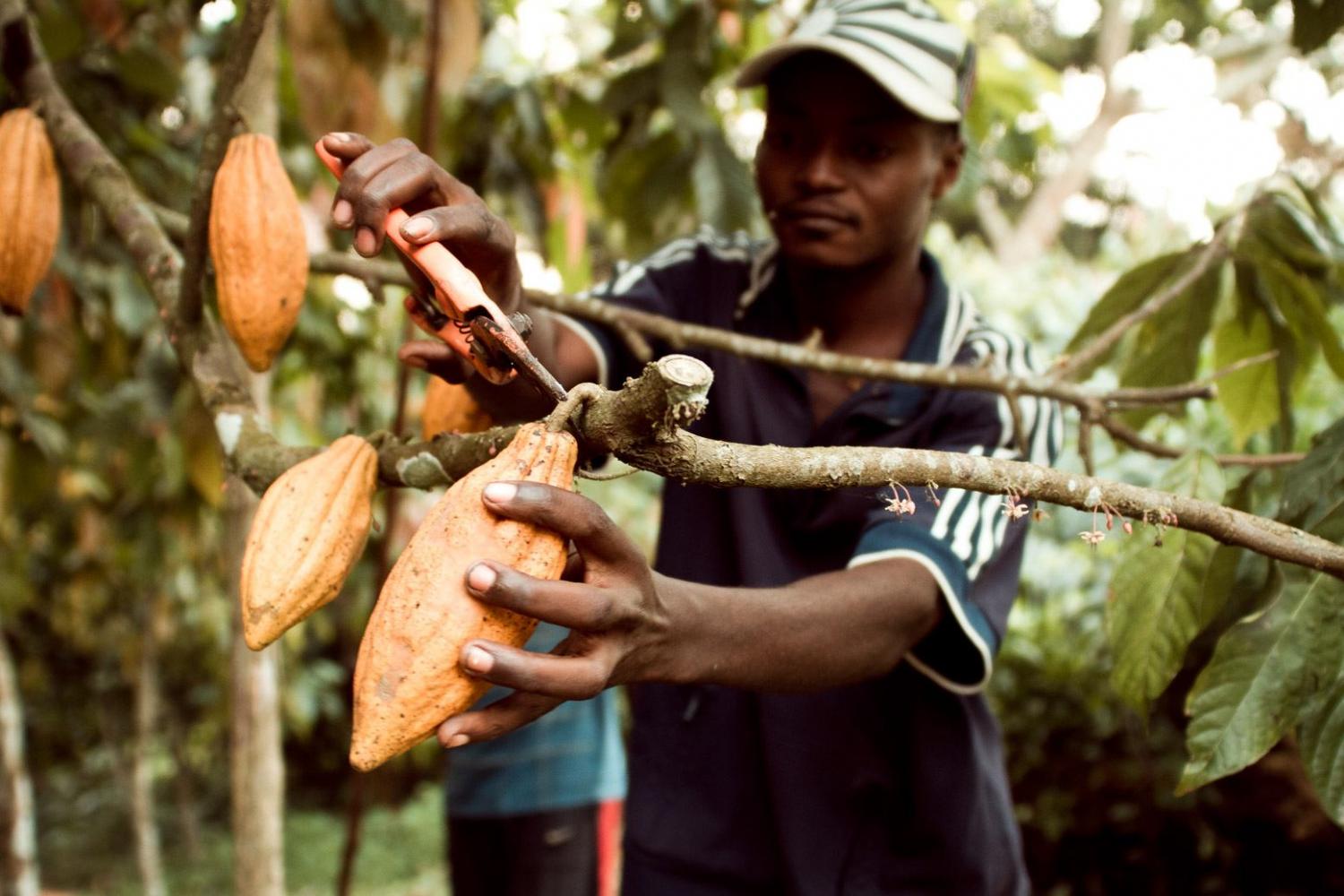

Chocolate is the elixir of life, or so it would seem from the world's annual chocolate sales. The rich, decadent confection is an $83 billion enterprise that spans the globe and sweetens revenues for multinational corporations as well as small, organic niche producers. It drives earnings greater than some countries' GDPs and almost single-handedly defines the make-or-break success of holidays like Valentine's Day.
For people who grow cacao, chocolate production is anything but a confection. It isn't defined by its sweetness, but its commercial viability as a hardy, weathered bean -- and oftentimes by the scruples of the buyer and vigilance of advocacy organizations.
A handful of non-governmental organizations oversee the certification of businesses when it comes to fair trade commerce. In a nutshell, fair trade certification organizations ensure that small-holder farmers in areas like the Congo, the Ivory Coast and Ecuador get fair and equitable pay for their product, are treated fairly, and have leverage when it comes to negotiating with foreign manufacturers. Each of these NGOs play an intrinsic role in promoting the concept of fair trade.
Their programs -- which may certify an organization from the supply chain all the way to the factory, or may just certify the ethical sourcing and supply of ingredients at the commodity level -- oftentimes include incentives that help the farming communities gain access to education, funding and infrastructure improvements.
All 'fair trade' is not created equal
But these organizations also differ in their view of how products that contain fair trade commodities like cocoa should be labelled. Several organizations, including Fair Trade USA and Fair Trade International, allow the use of a mass balance system, in which a cocoa purchaser or producer can obtain fair trade cocoa certification for the final product (say, a chocolate bar), even if the fair trade cocoa is mixed with conventional at the factory level.
To give an example, if 10 percent of the total cocoa purchased comes from fair trade sources, 10 percent of a company's chocolate bars made with that mix of cocoa can include the fair trade (FT) certified label. While the actual cocoa in the actual bar might be 90% conventional, the benefit to farmers who sowed the fair trade cocoa still receive 100% of their premiums.
Some certifiers like Fair for Life don't permit this process and require full traceability throughout the manufacturing process. Others, like Rainforest Alliance, take a middle-of-the-road approach, permitting the mixing of fair trade and conventional ingredients at a later point in the manufacturing process to ease tracking for product manufacturers while keeping things clear for consumers.
To make things more complicated, there are various degrees of certification each certifier offers based on whether that chocolate bar includes multiple FT ingredients or just (for example) FT cocoa, but that is outside the scope of this article. Back to mass balance.
Not surprisingly, mass balance is a controversial subject. Proponents argue it eases the transition to fair trade, which can grow the market for all those commodity farmers the fair trade movement aims to protect. Sri Artham, who serves as the VP of consumer packaged goods for Fair Trade USA, said the principle has a practical application: to make it easier for companies that have traditionally purchased their ingredients via conventional markets to transition to fair trade.
"There are certain ingredients, like cocoa and sugar, that are often produced in large factories and processed on a continuous basis. This is different than other products, like tea or coffee, that are usually processed in batches," Artham said.
The mass balance system makes it easier for new producers to get excited about fair trade, because it actually makes it feasible to participate. "The challenge with continuously-processed ingredients is that in order to change from one product to the next, the entire line has to be shut down, reset and then re-started, which means lost production time and increased labor costs," Artham explained. He pointed out that the global fair trade market is still pretty small, and only represents about 1 percent of the cocoa trade in the U.S.
That statistic makes it challenging for fair trade advocates to capture the attention of big multinationals like Hershey, which commanded 43.3 percent of U.S. chocolate sales in 2012.
In October 2012, Hershey announced its plan to source 100 percent of its chocolate ingredients from certified sources by 2020. In keeping with that goal, the company set out a number of social initiatives that would serve to underwrite its fair trade ambitions. "Most of those programs were already in place through the U.S. Department of Labor, United Nations, World Cocoa Foundation and other global initiatives," the company said.
In March 2013, the company announced that it would work with Fair Trade USA, as well as other certifying agencies, in what it called its 21st Century Cocoa Plan. It laid out incremental steps for attaining 100 percent fair trade certification in 2020.
Transitioning to fair trade certified ingredients can be challenging for large producers, said Artham, who pointed out that the road to 100 percent fair trade becomes even more expensive when companies have to stop, clean and restart equipment as they switch gears between conventional and fair trade ingredients. It makes it "a cost-prohibitive option for them and their customers ... That doesn’t benefit farmers, which is what fair trade is all about."
Are chocolate companies holding out on us, or is it all just part of the journey?
Joe Whinney, CEO of Theo Chocolate, an organic and fair trade company based in Seattle, was skeptical about the switching costs argument. (Theo is certified through the stringent Fair for Life program, which doesn't permit mass balance in its certification.)
Whinney argues that companies that use mass balance, for the most part, already have the mechanisms in place to support 100 percent traceable sourcing.
"They invest a tremendous amount of capital to segregate lines, to ensure there is no contamination such as allergens." For legal reasons companies must be able to source ingredients back to their origination, said Whinney, in case a customer has a problem with a product, such as in the case of an allergy to wheat or nuts. "[The industry has] been able to do it in a way that is remarkable," Whinney said. "So, they can actually do it more efficiently than a small company like Theo can."
What do consumers think?
FT USA uses a progressive labelling system to encourage companies to raise the bar in their performance. "Our labeling policy also creates an incentive to maximize fair trade content in a given product – the greater the fair trade content of a product, the stronger the product claim a company can make," Artham explains
The progressive labeling system includes a variety of choices, with a premium that goes to support the farmers who grow the product. Conceivably, the system encourages the manufacturer to do the right thing and transition fully to fair trade ingredients.
Winney thinks this isn't enough, because the mass balance system mixes ingredients at the commodity level. "[We] believe that there is a risk that when consumers find out that their product may not contain fair trade ingredients," said Whinney, who expressed concern that mass balance systems could weaken the fair trade initiative in the eyes of consumers.
Fair Trade USA's progressive labelling system focuses on ingredients, making no mention of the mass balance issue, so there is no opportunity for consumers to understand how a mix of conventional and fair trade cocoa ended up in their bar.
Artham and Fair Trade USA, however, think the focus on ingredients is a winning scenario for struggling developing-world farmers caught in a competitive market with limited commercial outlets for their product. "For every cocoa bean sold as fair trade, one is bought as fair trade," Artham pointed out. "Thus, farmers are only positively impacted by the use of mass balance in that there is a greater fair trade market available for their products, and they are earning the same fair trade price and premium as they would without mass balance."
But can mass balance encourage companies to transition to 100 percent traceable fair trade?
Says Artham, "Mass balance is designed as a step for companies towards fully traceable, and ideally 100 percent, fair trade supply-chains.
"As with most journeys, we find that many companies start in fair trade with a single step – whether that’s with a single ingredient or a single product. And we find that often once they see for themselves how valuable fair trade is, both to the farmers they rely on and their consumers, they’re inclined to continue that journey."
He said that the "greatest incentive that companies have to source as much as they can as fair trade is actually seeing firsthand how fair trade benefits the farmers in their supply chains. It also helps when consumers reward companies for their fair trade commitment by purchasing more of their products."
And it is that social pressure in many cases that helps to nudge companies to "do the right thing" in their business environments, as well as in their dealings with small-holder farmers who may not have the clout to command a fair wage or working conditions.
But is that social pressure enough to nudge a company like Hershey or Cadbury's off a mass balance program once it has reached the 100 percent threshold? Critics argue that there is little incentive for companies to source more expensive fully-traceable ingredients, since that 100 percent claim -- even if it comes from mass balance sources -- is quite compelling for consumers.
In 2011, Hershey joined the Roundtable on Sustainable Palm Oil (RSPO) and made a commitment to responsibly source palm oil under a mass balance program. In 2014, the company announced that after meeting its goal of transitioning to 100 percent mass-balance, RSPO-certified palm oil, it would up the ante by gradually transitioning to fully traceable palm oil sources. This week the company announced that it had met its sourcing goals for the first quarter of 2015.
Whinney is still skeptical of whether a cocoa mass balance program can encourage members to adopt a fair trade program if they don't have to. He pointed toward history to make his point, referencing the results of the Harkin-Engel slavery protocol, which was signed by cocoa industry leaders in 2001.
The protocol urged chocolate companies to eradicate child slavery in their supply chains. More than a decade later, it is still far from fulfilled.
"The industry signed the Harkin protocol almost 15 years ago, and that had very, very specific requirements that the auditors certify the supply chain [against the use of slavery]," Whinney said. "As soon at it came to that market, they negotiated. And they renegotiated again ... without achieving those initial goals that they all signed off on."
"Over the past decade, the deadlines for Harkin-Engel Protocol deliverables have been pushed back numerous times," wrote Adeline Zensius, who based her 2012 masters thesis for Georgetown University on the subject. "The current commitment is that cocoa companies will supply child labor-free chocolate for 70 percent of their supply chains by 2020." (pg. 43)
Unfortunately, it may be a while before companies can transition off mass balance in favor of pricier, fully traceable fair-trade ingredients. For the time being, however, the mass balance system offers a compromise for those who say they want to do the right thing ethically, but want to be assured their market share will outlive the transition.
Image of cocoa beans: Department of Foreign Affairs and Trade
Image of woman processing beans: LWYang
Reinventing Industries to Bring Green Jobs to the Rural South
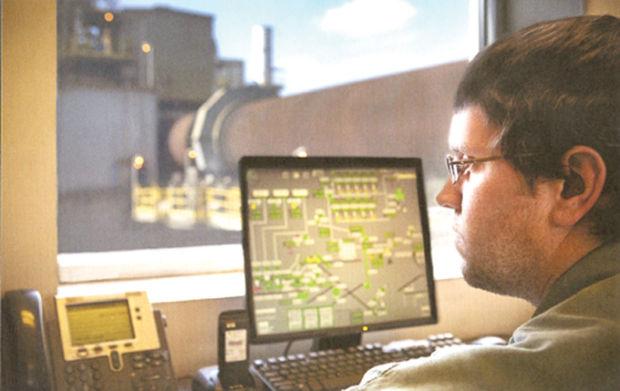

By Leah Thibault
By 2008, the textile and apparel mills that once employed more than 10 percent of the Snelling, South Carolina, population were shutting their doors and moving overseas. At the same time, a three-hour’s drive north in Cherokee County, a lumber distributor watched sawmill after sawmill close in the wake of the housing downturn, placing its supply chain at increasing risk. Meanwhile, the forest products industry in Alabama lost between 10,000 and 22,000 jobs between 2005 and 2009.
Each of these rural southern communities were hit hard by the economic downtown. The remaining business and community leaders sought to fill the yawning gap left in the wake of staggering job losses. But in seeking to rebuild, instead of returning to traditional manufacturing, they found growth in companies that take a greener approach to product and job creation.
Associated Hardwoods re-tools its business plan
If you were to drive by the Associated Hardwoods facility in Cherokee County, it may seem at first glance like a traditional sawmill, one of scores around the rural South. But on closer examination, the structure of this particular business -- coupled with new, state-of-the-art technology -- is giving way to a vibrant new economic engine in the rural community.
The mill has gone green, using new technology to effectively utilize nearly 100 percent of its most sustainable feedstock certified by the Forest Stewardship Council (FSC) and Sustainable Forestry Initiative (SFI). Associated Hardwoods can maximize the lumber recovery out of a log, while reducing energy costs by as much as 80 percent.
That benefit doesn’t even account for additional efficiencies in trucking and shipping generated by their new business structure, vertically integrating with its distributing parent. The company is bringing new quality jobs to a community where a third of the population lived below the poverty line just a couple of years ago and unemployment was nearly double the national average.
The improvements at the Associated Hardwoods sawmill is having a ripple effect within the logging community. The sawmill has provided a prime location for local loggers to bring their logs, reducing transportation costs to mills that are further from the area where the trees are cut. In a nine-month period in 2014, Associated Hardwoods spend over $1.3 million to purchase materials from local loggers.
Recycling brings renewal
In June 2009, Snelling, South Carolina, had a poverty rate of 20.7 percent and was a state-designated Economic Impact Zone. State and local economic development agencies worked around the clock and around the country to attract new businesses to the area. They found success with Pittsburgh-based Horsehead Zinc, another company updating a traditional industry for a new economy, greatly reducing its environmental impact.
Horsehead Zinc recycles a by-product of the steel processing industry known as electric arc furnace (EAF) dust into a safe and useful materials. EAF dust is classified by the EPA as a hazardous waste due to its concentration of heavy metals, but through its recycling process, Horsehead Zinc is able to transform that waste into products that can be used in brass manufacturing, battery production and corrosion-resistant coatings.
The company sought the right site for its heavy metal recycling operations and found the right elements in Snelling. It turned out to be a win-win. For a 12-month period ending in September 2014, Horsehead Zinc diverted 130,224 tons of EAF dust from landfills. The operation supports 61 full-time positions with an average annual wage that well exceeds the county per-capita level by 62 percent.
Diversifying through renewable energy
In Aliceville, Alabama, a privately-held timber management and natural resources organization sought to further diversify its business by utilizing renewable materials -- primarily the byproducts of forestry and sawmill operations -- to manufacture wood pellets for use in energy generation. In 2014, Westervelt Pellets utilized 75,551 tons of bark and fuel wood purchased from local loggers and supported 62 direct employees. The new manufacturing facility and related jobs were especially important to the community that had recently suffered extensive tornado damage.
It is an understatement to say it is a challenge for struggling, economically-distressed communities to reinvent themselves. There are hundreds of community leaders throughout the rural South who are trying to do exactly that, finding the right formula to attract and finance innovative business like Horsehead Zinc, Westervelt Pellets and Associated Hardwoods. In each of these cases the businesses and community leaders put together packages of state and local incentives. They also were able to utilize the federal New Markets Tax Credit program, a community development program with a primary goal to attract private capital and new businesses to economically underserved areas.
While these business are diverse in industry and output, they all share the common bond of ushering in new and greener opportunities for sustaining traditional industries, such as farming and logging. This innovation seeds the renewal of rural regions where they are creating much-needed employment opportunities.
Leah Thibault is Director of Executive Administration and Special Projects at CEI Capital Management, LLC.
Refrigeration Battery Could Lower Supermarket Energy Use By 40 Percent
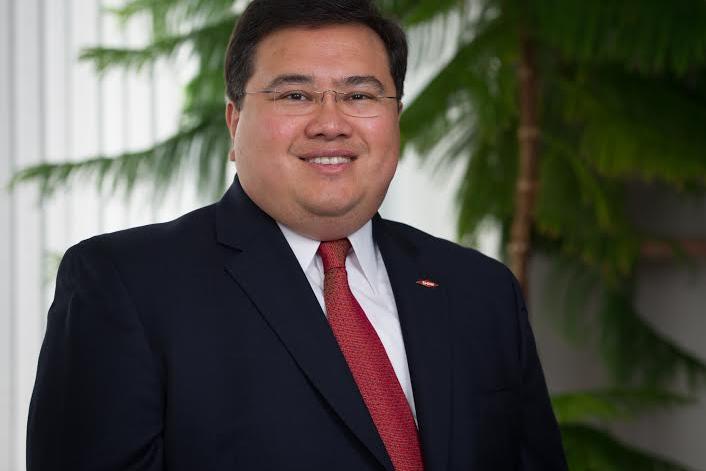

The capacity to deliver continuous electricity for refrigeration is one of the central planks of the modern-day food distribution system.
Using fossil fuel-generated energy to refrigerate and freeze foods around the clock produces a lot of pollution – carbon and greenhouse gas emissions that are warming the global climate, as well as emissions of a range of potentially toxic chemicals that deplete the ozone layer and wind up in our waterways and soil.
Enter Berkeley, California-based Axiom Energy and its Refrigeration Battery: a water- and ice-based backup cooling system designed for use in large supermarkets and food distribution facilities. The system is now available in California, Axiom announced last week.
The system offers “behind the meter," or customer-sited, energy storage -- enabling supermarkets and food distributors to store energy at night when demand and utility rates are low and use it for cooling and refrigeration during peak daytime hours when rates are high. This affords these businesses substantial cost savings and hence high returns of investment, Axiom says. Along with the financial gains come substantial health and environmental benefits.
Lowering supermarket electricity bills and helping address climate change
Following through on President Obama's Climate Action Plan, the U.S. Department of Energy in February 2014 issued new energy efficiency standards for commercial refrigeration equipment. Over the ensuing 30 years, DOE projects the new standards will reduce carbon pollution by 142 million tons – the equivalent of generating electricity for 14.3 million U.S. homes – while also saving businesses as much as $11.7 billion on energy bills.
Large commercial refrigerators commonly used in grocery stores can consume up to 17,000 kilowatt-hours of energy per year. A large commercial freezer can use up to 38,000 kWh, according to the DOE. Axiom points out that refrigeration costs make up over 50 percent of a typical supermarket's electricity bill. With the capacity to store energy for 6 to 12 hours, its Refrigeration Battery can “shave” peak electricity demand at supermarkets and large food distributors by as much 40 percent,” the company claims.
The winner of the Venture Capitalists Choice award at the 2014 Cleantech Open Accelerator, Axiom says its battery “solves a major technical problem that businesses with high refrigeration loads have to been unable to address until now: the inability to actively manage unintelligent refrigeration systems.” By installing the Refrigeration Battery, supermarkets and food distributors can essentially transform “their refrigeration systems into large-scale, cloud-connected, smart energy storage resources.”
“Supermarkets and cold-storage facilities must keep perishable food at a constant temperature around the clock, which means they must run power-hungry refrigeration equipment even when electricity prices skyrocket during the peak hours of the afternoon. Until now, this has been a huge, unavoidable cost that erodes their razor-thin profit margins — that’s where we come in,” Amrit Robbins, Axiom Energy's president, stated.
Axiom's Refrigeration Battery
The Refrigeration Battery stores energy for later use in refrigeration by freezing a tank of water “with common additives at night when electricity is inexpensive,” Axiom explains. The energy storage system can then be discharged during peak periods of electricity demand in the afternoon. This enables supermarkets and food distributors to turn off their refrigeration systems' compressors and condensers.
With a lifespan that at 30 years – many times that for traditional batteries – and an installed cost that Axiom asserts is significantly lower than any alternatives available, the company is keen to prove the Refrigeration Battery's touted benefits in the market, Robbins added. “We believe we are the only viable energy storage solution for facilities that depend on refrigeration."
In addition, Axiom has worked to ensure that its battery “is a non-invasive, 'plug-and-play' retrofit that doesn’t require modifications to existing refrigeration systems.” This is a big factor in driving down the system's total cost of ownership, resulting in a short payback period and the ability to roll out the battery across multiple sites in short order, according to Axiom.
Axiom highlights the Refrigeration Battery's key attributes in a press release:
- Shifts peak usage to off-peak hours;
- Provides backup cooling during power outages to prevent food spoilage;
- It's an easy retrofit that uses existing refrigeration equipment;
- Much less expensive than competing solutions.
“The refrigeration industry has been trying to solve the problem of ever-increasing refrigeration energy costs for a long time,” said Pete Cuneo, national facility systems manager for a major supermarket chain.
“It looks like Axiom Exergy has finally cracked the nut and potentially even solved a bigger problem — low-cost backup cooling. The Refrigeration Battery represents a major advancement in an industry that hasn't changed much in decades."
*Image credits: 1) Energy.gov; 2) Axiom Energy
5 Mindsets That Can Kill Your Entrepreneurial Dreams
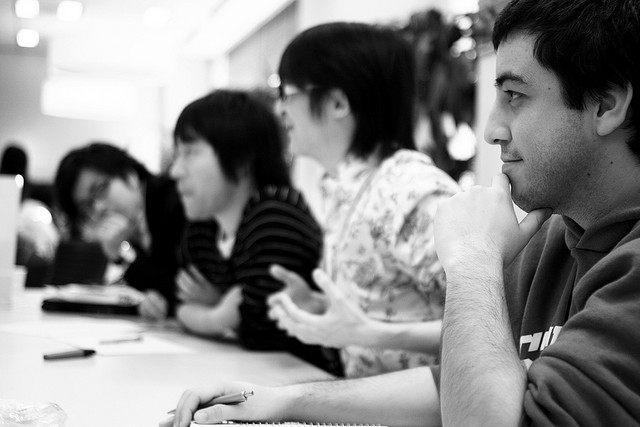

By Renuka Rana
Entrepreneurship is something all career-driven individuals’ desire, yet only few are able to make to their entrepreneurial dreams come true.
When it comes to business success, there’s no cookie-cutter mold. It’s critical for entrepreneurs to continuously work on their mindset, since it is this that determines what actions to take.
While styles of entrepreneurs may vary, they share very similar mindsets. However, there are few mindsets that can cost you your dreams of entrepreneurship, if you let them.
1. The fear mindset is the kiss of death for entrepreneurs
Despite all great entrepreneurial dreams, people get stuck along the way. Once you let fears take the driver’s seat, you will fail to make effective business decisions.
Successful entrepreneurs are not immune to fear. But they know how to prioritize their approach to life so that fear of failure or dissatisfaction outweighs the lingering fear of success.
Quick Tip: Use fear as early warning system. If it is holding you back from taking decisions, a mindset shift is in order.
2. Overconfidence can lead to poor outcomes
Overconfidence can be truly damaging to your path to entrepreneurship. One of the reasons for this can be that entrepreneurs who see themselves as experts are least likely to change and learn. It causes them to overestimate their knowledge and underestimate the risks.
Overconfidence in business robs you of an open mind, blinding you to the innovation of competition. It lets your ego drive decisions, which isn't the same as confidence based on knowledge.
Quick Tip: Stay humble. You can’t always be so “right” that you stop listening to others.
3. Perfectionism is a creativity serial killer for entrepreneurs
One might think perfectionism would be a great personality trait to have when starting a business. However, this all-or-nothing attitude can be a dream killer for entrepreneurs.
Perfectionism is a voice in your head that says the product is not good enough to market, website is not good enough to launch, and many more. The truth is: There is nothing called as ‘perfect time.' It just restricts you from the desired success.
Quick Tip: Accept the probability of failure, and let go of perfectionism.
4. Indecision: A barrier for growing business
Indecision can be a silent killer for many startups. Young entrepreneurs are usually stuck in indecision, with one foot on the gas pedal and another on the brake.
It would be fair to say that many startup founders aren't the radically indecisive types -- they started the company at least -- but indecision is a vicious circle that creeps in slowly. If you find yourself enveloped in indecision, flip a coin and do something. If it turns out wrong, you got a lesson to learn and enjoyed the moment.
Quick Tip: Bad decisions can have a negative effect on startups, but indecision is even worse and can lead to all sorts of disasters.
5. Procrastination can cost you
We all have the tendency to procrastinate at times. Whenever there is work to be done, we would find excuses not to do it and put it off until there is absolutely no choice but to bite the bullet and get it done.
Never leave that till tomorrow which you can do today.
The above advice comes from a guy who was an absolute whiz at efficiency and productivity, Benjamin Franklin.
Quick Tip: Your excuses, dilly-dallying and puttering around aren't tricking anyone. So stop procrastinating and simply go for it.
Wrapping up
Unfortunately more startups fail than succeed. The reason for their demise may not necessarily be the concept or idea, but could be inadequate pre-planning or preparation. Don’t fall prey to the scenarios described here. Recognize what’s important for your business and develop a positive entrepreneurial mindset.
Image credit: Flickr/Derek A., aka iMorpheus
Renuka Rana, Editor at AceCloudHosting DotCom spends considerable part of her time in writing about technology including cloud computing and smartphones. When not writing, she loves to dig deeper into knowing the best and the latest technology in industry.
Adobe: Unleashing Creativity in the Workplace


It might seem somewhat odd to connect creativity with the general risk-averse attitudes of many companies, but Adobe has put its finger on a key point: nurture the creative potential of students so that they will bring creative and innovative tools and mindsets to the workplace.
One can have a discussion about whether creativity is a learned skill — for one thing it, like consciousness or love, is almost impossible to define adequately. There’s no simple step-by-step process that will free one’s inner-Picasso or inner-China Miéville.
But that’s a different discussion for another day and forum. What Adobe is addressing in a concrete and necessary way is twofold: What constitutes creativity in today’s workplace? And how do we tap the creative potential of young people to prepare them for the workplace of today and tomorrow?
Adobe says creativity in the workplace starts with creativity in education. As Tacy Trowbridge, group manager of Adobe’s education programs, put it: “Creativity is essential … It’s no longer an elective; it’s the future because the world of work is changing quickly.” The “technological explosion” in the way we communicate means we are faced with “making yourself heard in an increasingly complex and noisy setting,” Trowbridge said.
Preparing students for a changing workplace
Work is changing in many ways, Trowbridge continued, and students need to bring tech-savvy skills to the table in order to communicate through digital and visual media, “understand ways in which problems are solved,” and understand problems in new ways. “Creativity is the catalyst for innovation, and it’s critical to economic growth.”
Trowbridge talked about a recent Edelman Berland online survey of 1,068 hiring managers, “Seeking Creative Candidates: Hiring for the Future,” commissioned by Adobe, that underscores the importance of creativity in the workplace. The survey indicates that both the marketplace and technology are changing the evaluation criteria for candidates and increasing the need for creativity in problem-solving.
One telling survey result: When asked whether students are prepared for today’s workplace, 70 percent of the hiring managers surveyed said students are unprepared and lack the necessary tools for success.
More results from the survey underscore the factors faced by businesses and their employment candidates:
- Seventy-five percent of hiring managers agree the job market will change significantly in the next five years. Tech-savvy (88 percent), the ability to communicate through digital and visual media (82 percent) and creativity (76 percent) are cited as becoming essential skills.
- Hiring managers indicate that problem-solving skills and critical thinking (58 percent) and creativity and innovation (41 percent) will be among the most “in-demand” skills over the next 12 months, along with technical/specialist skills (45 percent).
- 94 percent agree that creativity is key when evaluating candidates and prefer those with creative skills over conventional skills by more than 5 to 1.
- Eighty-two percent of hiring managers say they seek well-rounded candidates who are able to creatively apply core skills to a range of business and technical problems.
- Hiring managers note that students and recent graduates can set themselves apart by developing a broad range of skills (60 percent) and increasing their focus on creative thinking – learning what makes their creative wheels turn (47 percent), understanding that innovation and creativity can be learned (35 percent) and recognizing that thinking creatively will take them further than technical expertise (35 percent).
- Hiring managers agree that preparing students for the future requires a more modern approach, including courses and training opportunities to prepare students for the jobs of tomorrow (54 percent), rewarding innovation and creativity in education and on the job (38 percent) and requiring technical majors take courses in creative disciplines (33 percent).
“Creativity and problem-solving are becoming the key to success in the new market world,” Trowbridge said. “Candidates with these skills are more valued and rewarded financially.”
Training the creative leaders of tomorrow
The message and the imperative from the survey and other studies, including "The Creative Dividend," is that creativity in business will drive results. Adobe is stepping up big-time to help prepare students for the future through programs such as Adobe Youth Voices, the Adobe Education Exchange and major participation in the White House’s ConnectED initiative.
“Adobe has committed to donate up to $300 million in software and professional development to Title I schools in the United States over the next four years — with the goal of helping youth express creativity and build skills for future success,” Trowbridge says.
More than 78 percent of the Adobe Foundation's cash grants support education initiatives that provide underrepresented youth digital media making and coding skills. In 2014, Adobe launched its Youth Coding Initiative, providing grants to partners like Girls Who Code and CodeNow.
Adobe Youth Voices (AYV) is the Adobe Foundation's signature program. Since it was founded in 2006, more than $53.8 million has been invested. More than 190,000 youth in 60 countries through 1,500 educators have participated in the program since its inception.
The Adobe Foundation also commits $1 million each year to fund the AYV Scholarships, a program for high school seniors (or international equivalents) who have participated in AYV and who apply for support to attend post-secondary education or certificate training in creative fields. “The funds support AYV youth as they go on to become the next generation of creative thinkers and innovators who continue to find innovative ways to improve their communities,” said Lauren Stevenson, senior manager of AYV.
“Creativity is a catalyst for social change. We want to help [students] create with a purpose, to find their voice, what they want to express and what impact they want to have.”
Stevenson noted that for the past nine years students aged 13 to 19 have participated in AYV, but a “new evolution” of the program will see it expand to the 13 to 24 age group.
“I think the core of creativity is the ability to imagine how something can be different and then take steps to make it real. It’s a set of skills, dispositions and capacities that can be developed — everyone has the potential for creativity,” she said.
Jeff Larson, who teaches art and animation at Balboa High School in San Francisco, put it this way: “The creative process can kind of be a messy one … It’s important for students to become creators of content in media because it reverses the roles and the position they are in; instead of passively receiving the information, they have to actively engage and think about the whole process in creation and delivery and learned skills and to communicate with others.”
“I learn as much as the students do,” said Gordon Silveria, a teacher at the Academy of Art University in San Francisco. “Waiting for inspiration is just for amateurs, the rest of us just sit down and get to work.”
"The economic imperative is clear"
“The economic imperative for creativity is clear … Business leaders want people who are creative,” said Sir Kenneth Robinson, author and creativity expert. But to produce those people schools need a transformation from linear and standardized approaches. “The world is more connected, complicated and challenging,” he continued, and it is the task for education to promote creativity because “creativity is not an option; it’s an absolute necessity.”
How many companies are taking on the problem, possibility and art of creativity in a serious and comprehensive way?
This is why what Adobe is doing is so impressive. Stevenson said that 65 percent of today’s school kids will end up in jobs that have not yet been invented, so there “has to be a certain nimbleness … there are muscles that can be exercised. Adobe is helping prepare students for the next America.”
Image credit: Pexels
6 Rainforest Products You've Never Heard Of


Fair trade isn't just for coffee and cocoa! When I visited Guatemala last week, I was struck by the sheer number of products that are being produced sustainably by cooperatives certified by FSC and Rainforest Alliance. I knew the rainforest was a bastion of biodiversity, but little did I know its leaves were making their way into my flower arrangements!
Read on to find out how these products, sustainably produced and harvested by rural communities, are making their way into your gum, furniture and maybe even your flour, too.
1. Xate
Pronounced shah-tay, this leafy rainforest plant is a popular green ornamental for flower arrangements, especially religious ones. Guatemala is the sole producer of certified xate and provides about 5 percent of the U.S. market. The leaf is collected from the jungle by hand and sorted by women who make above the minimum wage.
2. Santa Maria
This rainforest hardwood looks like mahogany but costs about 40 percent less. It is used to make all kinds of furniture and for many building applications like the fences-in-progress seen below. These are built in-country so that the collectives of the Petén can capture more of the value from the trees they selectively cull.
3. Mahogany
Speaking of mahogany, yes, you've probably heard of it, but did you know this fine wood came from deep in the rainforest? The community of Carmelita cuts trees based on purchase order, so there is no unsold timber. They cut a maximum two trees per hectare to ensure the rainforest will provide for generations to come. Thanks to FSC certification, they maintain a strict chain of custody to ensure that all lumber can be tracked to the source.
Seen here, tree No.155 was noted on a map and the stump is marked correspondingly, so end users know the source of their sustainable wood.
4. Chicle
This rubbery substance is still a common ingredient in many chewing gum formulations. It's collected by chicleros, who climb the trees and whack them in a cross pattern with a machete to bleed the sticky sap into a small bag. The chicle is then boiled until it reaches the right thickness.
5. Ramon Nut
The ramon nut was a common source of protein for Mayans. The hard nut has a kumquat-like peel on it which is very popular with the local howler monkey population. The nuts themselves are collected by hand and processed by a women's collective into a flour, which can be used for everything from a coffee-like drink to cookies and bread.
6. Cojones de Caballos
This tree is named for its unusual fruit. In addition to looking like its namesake, horse's... ahem... testicles, the fruit contains a a sticky white substance with a sweet taste. The market is currently wide open for export.
Unless otherwise noted, images are credit the author.
Travel and accommodations in Guatemala were provided by Rainforest Alliance; this story is editorially independent and opinions are my own.
Offshore Wind is (Finally) Coming to the U.S.
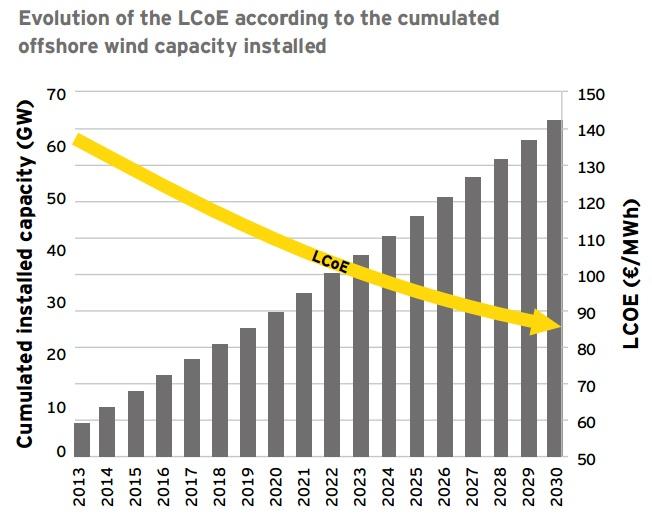

On Monday, Deepwater Wind broke ground on what's expected to be the first utility-scale offshore wind farm in U.S. waters. At a planned 30 megawatts, the Block Island Wind Farm project marks what the Sierra Club calls “a watershed moment for American clean energy development.”
In addition to creating 300 local jobs and meeting the energy needs of all the residents of Block Island, the five wind turbines to be installed in Nantucket Sound off the Rhode Island coast are to be interconnected with a mainland grid via a new undersea cable. Deepwater Wind Block Island, a wholly-owned subsidiary of Deepwater Wind, completed financing for the offshore wind farm back in March, announcing that it had secured more than $290 million in project financing. The project is slated for completion in 2016.
In September 2012 a Stanford University research team concluded that U.S. Atlantic coast offshore winds hold the potential to meet the electricity needs of no less than one-third the entire nation, or all that's needed across the U.S. East Coast from Maine to Florida. Development of this vast clean renewable energy resource continues to be hindered by engineering and technical challenges, as well as by NIMBY and clean energy opponents despite development of an integrated, flexible ecosystems-based institutional framework and federal funding of R&D by the Obama administration.
A "watershed moment" for U.S. offshore wind power
The high up-front capital and retail costs of U.S. offshore wind power has been a persistent and pointed criticism from those opposed to government support. But project proponents say the Block Island Wind Farm will reduce electricity rates for New England residents by 40 percent.
Residents of Block Island rely on diesel generators for electricity. All of those will be replaced, and all the island's electricity needs will be met upon completion of the offshore wind farm. More substantially, excess electricity will be sent onwards to National Grid's mainland power distribution network and supply renewable electricity to Rhode Island and other New England states.
Moving "Beyond Coal"
The Sierra Club has been drumming up support for the Block Island wind farm since the project was launched in 2009. “The importance of this day cannot be overstated,” Emily Norton, director of the Massachusetts Chapter of the Sierra Club, was quoted as saying.
“The Block Island Wind Farm is our Apollo 11 moment. I am going to remember this day, and tell my kids and grandkids that I was there when the first U.S. offshore wind farm was built – that when we had a choice between bequeathing them a future powered by polluting fossil fuels that lead to extreme storms, heat waves and drought, we chose to power their future from the wind, and the sun, and smart technologies.”
Sierra Club and other U.S. offshore wind power supporters see the Block Island Wind Farm project as “just the beginning of a burgeoning offshore wind industry in the United States."
"The Bureau of Ocean Energy Management has designated a wind management area off the coast of Rhode Island and Massachusetts that has the potential to generate as much as 9,000 megawatts" of wind power. If fully harnessed, that's enough to "power 700,000 homes and create 43,000 offshore wind-related jobs on the east coast by 2030,” Sierra Club says.
The U.S. has yet to see a single commercial offshore wind power project completed. With plans to install 130 wind turbines in Nantucket Sound off the coast of Cape Cod, Massachusetts, the more ambitious Cape Wind project looks as though it's dead in the water. Criticized as poorly designed and conceived, Cape Wind in April 2010 garnered a $150 million promise of a federal loan from the Obama administration that was contingent on Cape Wind securing the $2.6 billion it projected was required to complete the project from private-sector sources.
The European Union, in contrast, continues to forge ahead in developing offshore wind power potential. According to the European Wind Energy Agency (EWEA), 2,488 wind turbines spanning 74 offshore wind farms -- with total renewable energy generation capacity of 8.045 megawatts -- were connected to power grids across the EU as of year-end 2014.
Development of offshore wind power potential in the U.S. dovetails with Sierra Club's Beyond Coal campaign. “Moving beyond coal means more than just putting a stop to coal fired power; it means investing in America’s true clean energy promise,” Niles added.
“Today, on Block Island, we again prove that America can be a leader in creating a clean energy reality that ensures every person can breathe clean air, enjoy clean water and live in a world free from the threat of climate disruption.”
*Image credits: 1) European Wind Energy Agency 2) Edie.net
Solar-Pedal Trike Fits the Niche Between Bikes and Cars
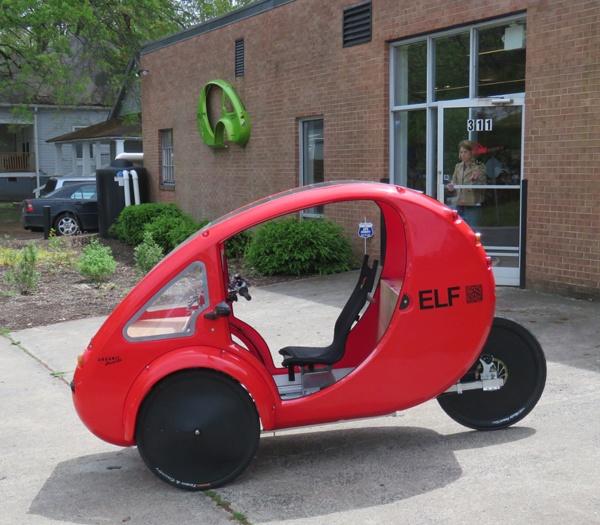

A recent article in the Wall Street Journal said that China would soon have as many drivers as the U.S. has people. India is on track to surpass Japan to become the third largest auto market next year. What will all this growth in automobiles mean for our climate?
Sure, fuel economy is improving, and the continual addition of electrification into the mix will reduce emissions. But will this be enough to offset the surging growth in developing countries? Remember, we need to do more than hold the line. According to James Hansen, we need to reduce emissions by 6 percent every year if we are to stay within 2 degrees of warming.
What if a large percentage of those millions who are expected to purchase their first automobiles decided to go for a bicycle instead?
I have some good news to report on that front, coming out of a tiny shop on the edge of downtown Durham, North Carolina. According to Rob Cotter, CEO and founder of Organic Transit, makers of the ELF solar-pedal trike, there is a niche waiting to be exploited in the space between bicycles and cars.
“In the bicycle world,” said Cotter, who I spoke with in a tiny office in the corner of his shop, “they have what they call the 'great blue ocean.' That’s the 80 percent of people who could be riding bicycles but don’t.”
There are a variety of reasons for this, but they basically boil down to these few:
- They’d commute by bike don’t want to get to work all sweaty.
- They don’t want to get caught in the rain.
- They want to carry a bunch of cargo.
- They don’t want to pedal up big hills.
- They want to be safer.
Filling the bike-car gap?
Enter the ELF, a three-wheeled, covered bicycle that you can pedal or drive with a motor. The 11Ah 48-volt Lithium-ion battery that powers the electric motor can be charged at an outlet, or from the solar panel that sits atop the vehicle’s roof. The motor will take you comfortably down the road at 20 miles per hour -- faster if you pedal along.
It addresses all of the above concerns without missing a beat. No need to get sweaty. The roof keeps off the rain. There’s cargo room enough to carry a dozen grocery bags or 350 pounds of cargo. The 750-watt motor will take over on big hills, if you’d prefer. And it’s safer for several reasons: First, because a three-wheel platform is more stable than two -- no need to balance. Second, because it’s taller and brightly colored —much more visible in traffic. And third, because there is some measure of protection offered by the surrounding cover, which is made by a material similar to that used in canoes. When you're done, park it in the sun and let it charge up.
The product is durable, stands up well to sun and weather, and has excellent visibility. It comes with LED headlights, taillights and brake lights.
Cotter, who worked on race cars after college, later fell in with Paul MacCready of Gossamer Condor fame. The two worked together in the Human Powered Vehicle Association. “I knew then that I could build a vehicle that could the equivalent of 800 miles per gallon,” said Cotter, but in the Reagan years, interest in fuel economy and efficiency waned. So, he took a job as a creative director, started producing documentaries and became very involved in human rights.
Now, he has put it all together in the name of “environmental prosperity," with the ELF that can achieve a jaw-dropping equivalent of 1,800 miles per gallon.
Taking it on the road
I took one for a short test drive, and while it took a few minutes to get used to, it definitely put a smile on my face. Yes, it rattled a bit going over bumps, and yes, I had to remember which gear I had left it in when I switched back from motor power to pedaling. But it did what I asked it to do, which was to take me from point A to point B without much effort on my part -- and virtually no impact on the planet. It was not hard to see the possibilities.
Unlike some reviewers, who focused on the shortfalls of the vehicle when compared to an automobile, having recently traveled in places like India and rural Kenya, I could certainly see how a vehicle like this could fit in. I can see a whole bunch of these Elves chugging alongside bicycles carrying three people and motorcycles carrying four, as they often do in places like this.
I expect this niche will become an important one over the years to come, because of its ability to meet the transportation needs of thousands, if not millions of people, as they emerge from poverty or simply adjust their lifestyle to a more urban and Earth-friendly one, and while doing so with minimal impact to the planet on which we all live. Other players will certainly jump in, but ELF will certainly participate and hopefully be remembered for its pioneering work in this important area.
Image credit: RP Siegel